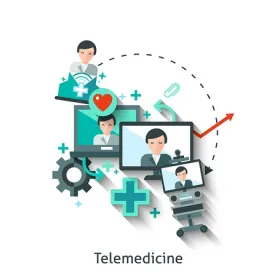Nearly two years after the passage of the New Jersey Telemedicine Law (N.J.S.A. 45:1-60-64), the various licensing New Jersey state licensing boards have finally begun proposing regulations to implement the statute.
The State Board of Medical Examiners kickstarted the rule proposals by proposing rules for physicians and podiatrists who use telehealth and telemedicine (N.J.A.C. 13:35-6B) on May 6, 2019. The State Board of Marriage and Family Therapy Examiners also proposed rules for art therapists (N.J.A.C. 13:34D-8.2) on the same day.
As of July 1, 2019, the state boards have issued proposed regulations for various licensed professionals, including:
-
midwives (N.J.A.C. 13:35-2A.18 through 2A.26);
-
psychologists (N.J.A.C. 13:42-13);
-
hearing aid dispensers (N.J.A.C. 13:35-8.21 through 8.28)
-
physical therapists and physical therapy assistants (N.J.A.C. 13:39A-10);
-
athletic trainers (N.J.A.C. 13:35-10.26);
-
orthotists, pedorthotists, prosthetists, and their assistants (N.J.A.C. 13:44H-11);
-
psychoanalysts (N.J.A.C. 13:42A-8);
-
psychologists (N.J.A.C 13:42-13);
-
genetic counselors (N.J.A.C. 13:35-14.19 through 14.26);
-
veterinarians (N.J.A.C. 13:44-4A).
-
licensed acupuncturists (N.J.A.C. 13:35-9.21 through 9.28)
-
nurses (N.J.A.C. 13:37-8A)
-
social workers (N.J.A.C. 13:44G-15).
These regulations vary slightly from one licensing board to another, but they all focus on standards of care, licensee-patient relationships, prescriptions, information security, fraud and abuse, and the provision of health care across state lines.
One broad theme that appears throughout each proposed rule is maintenance of the same standard of care as services provided in person. If a licensee they can’t meet this standard, they must advise the patient to see a provider in person. The telemedicine/health provider must use real-time, two-way communication technologies with a video component, unless they believe they can meet the standard of care of in-person services without video. In that case, they can interact using two-way audio along with technology that permits the transmission of images, diagnostics, and medical information. While the regulations set up a distinction between in person and telemedicine standards, they do not set objective metrics for the quality of telehealth and telemedicine to supplement a provider’s subject belief they can meet that standard.
These regulations are also designed to address potential difficulties faced in establishing a provider-patient relationship, because of the remoteness of the digital relationship between provider and patient. In all of the regulations, a licensed telemedicine provider will be required to review their patient’s medical history prior to their first encounter with the patient, though providers may look at the history before or during subsequent interactions. Licensed providers will also be required to provide contact information to a patient, for themselves or another licensee, for at least 72 hours after the provision of services.
Another problem presented by the remote relationship between provider and patient is the scope of prescriptive authority of providers. These regulations allow providers to issue a prescription through telemedicine or telehealth, but providers may not issue the prescription based solely on the responses to an online questionnaire unless they have already established a licensee-patient relationship. Providers may not prescribe Schedule II controlled substances without evaluating the patient in-person first, and after prescribing they must evaluate the patient every three months while the prescription is active. Certain boards have put in place additional restrictions on services offered or prescriptive authority, presumably because of the difficulty of providing the same standard of care remotely. For example, the Acupuncture Examining Board prohibits acupuncturists from prescribing the patient to insert needles into their own body.
Finally, these proposed rules regulate the cross-border practice of telehealth and telemedicine. The proposed regulations require licensees to determine where the patient is located and record that location in the patient’s record. In other words, ignorance of the patient’s location will not be enough to allow providers to provide services to patients in New Jersey without a state license.
If you considering providing telehealth service as a New Jersey licensed provider or are an out-of-state provider and are considering providing telehealth services to patients/residents in New Jersey, please consult with counsel to ensure that the arrangement and you are in compliance with the telemedicine regulations.
All proposed rules include a 60-day comment period, after which the agency proposing the rule can adopt the proposal without change or with changes pursuant to rulemaking procedures. Stay tuned to this blog for any updates or changes made to these regulations before they are adopted.
We gratefully acknowledge the valuable assistance provided by Craig Ismaili, third year law student at Washington University, in the preparation of this blog post






 />i
/>i

